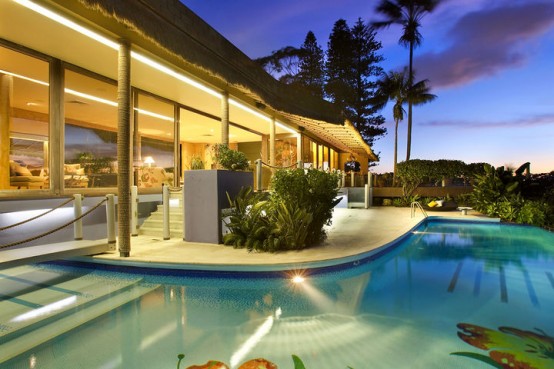Introduction
Douglas B. Snelling was an outstanding architect and designer of the post-war period in Australia. He was an English-born, self-taught designer who managed to get a professional diploma only in 1950s in Australia. He moved to Australia in 1942 but left for the USA for the World War Two period; while living in the USA he worked in the sphere of advertising and cooperated with the US Navy and the Kriesler Radio Company (Payne, 2002, p. 157). He also pursued his career in advertising during his stay in New Zealand. However, his meeting with Frank Lloyd Wright became a turning point in his life giving an incentive to become an architect (Payne, 2002, p. 157).
The life of Snelling
Snelling returned to Australia in 1946 and started producing functional furniture together with co-founders of the Functional Products Pty Ltd. with Terry Palmerston. The main incentive for their undertaking was the fact that Australian furniture was not adjusted to the human needs and did not provide convenience and aesthetic pleasure. Thus, the Snelling Line appeared in the furniture market – web chairs, unit cabinets called the Snelling Module became the major field of Snelling’s work in design (Payne, 2002, p. 157). Even on qualifying as an architect in 1950s Snelling did not give up interior design and continued working with furniture and managing the Functional Products Pty Ltd. Upon its becoming a public company (Payne, 2002, p. 157).
Awards and Major Works
Among Snelling’s most popular architectural works one should take into consideration the Tahiti residence that was built in the exotic “Hawaiian” style – it is “situated within 2046 sqm of tropical gardens at a captivating vantage point above Hermit Bay” (“Tahiti” – Sydney’s Harbourside House, 2009). This residence remained so impressive and unique for more than half a century that it was sold at a record price of $29.5 million in 2007. The house has remained so attractive due to its comfortable design, luxury and warm atmosphere achieved by means of wide terraces, open construction that presupposes living areas for guests and personnel, presence of a billiard room and a place for the discotheque etc. (“Tahiti” – Sydney’s Harbourside House, 2009).

Snelling’s web chairs are also worth separate consideration – they are considered a ‘must have’ for any collector of chairs, and they used to be highly popular in Australia. Due to the canvas webbing in the Scandinavian style, they became an indispensible element in any Australian house due to their mobility, tidiness and elegance. The revolution made by Snelling represented a protest against hard chairs taking much space and being hard to move; the contribution to the interior design in Australia in the middle of the 20th century became so recognized that the web chair of Snelling won the Australian design awards and was included in the list of top 20 authentic Australian design elements (Holland, 2002, p. 7).

One more award that needs to be remembered about Snelling’s architectural work is the design of the Snelling house that was further on restructured and redesigned by Alexander Tzannes. It won the Robin Boyd Award for Housing. The house was built of “local sandstone, timber, steel and glass” in order to become a suitable complement to the surrounding typical Australian environment. Though the house was mostly neglected in the second half of the 20th century, in 1996 it was reconstructed to remain a living example of Snelling’s creative activity (Smelling House, 2010).
Conclusion
Snelling’s creative spirit and rich experience he obtained living and working in the USA, New Zealand and Australia was implemented in the major works he conducted in the sphere of advertising, design, architecture etc. Living from 1917 to 1985, Snelling managed to grasp the post-war motives of functionalism that were apparent in his furniture and construction works that find their recognition even nowadays. More in-depth research of Snelling’s life and career will give a better idea for those wishing to know about the measure of his contribution in the world’s architecture and design as well as the measure of novelty introduced by him in the discussed fields.
References
Holland, A 2002, ‘Design down under’, The Sydney Morning Herald, Web.
‘Now & Then – Douglas Snelling Chairs’ 2009, Collectors, Web.
Payne, S 2002, ‘Douglas Snelling and Functional Products’, in M Bogle (Ed), Designing Australia: readings in the history of design, Pluto Press Australia.
‘Snelling House’ 2010, Interior Design Awards, Web.
“Tahiti” – Sydney’s Harbourside House 2010, Web.